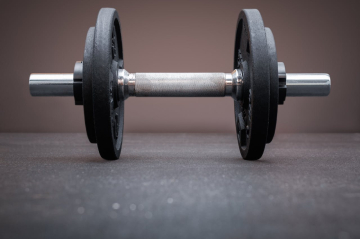Injuries are a part of life, whether they come from physical activities, household accidents, or unexpected incidents. Recovering from an injury can be a challenging and sometimes lengthy process, but with the right approach and proper care, returning to full functionality and well-being is possible. In this article, we will explore the key aspects of injury recovery, from the first steps after injury to full rehabilitation, offering practical tips and strategies to help you on your path to recovery.
Addressing the Injury Immediately After the Incident.
Evaluate the Severity of the Injury.
The first thing you should do after suffering an injury is to evaluate its severity. Determine if you need immediate medical attention or if you can manage the injury at home. If the injury is serious or life-threatening, seek medical help immediately by calling the emergency number in your country.
Rest and Protect the Injury.
Once the injury has been evaluated, it is important to rest and protect the affected area to prevent further damage. Avoid using the injured area and apply ice if there is inflammation or swelling to reduce pain and inflammation.
Compression and Elevation.
If the injury is to an extremity, consider applying compression with an elastic bandage and elevating the affected part above the level of the heart to reduce swelling and improve blood flow.
Initial Treatment and Pain Management.
Ice Treatment.
Applying ice to the affected area for 15-20 minutes every hour can help reduce swelling, pain, and inflammation. Be sure to wrap the ice in a cloth or towel to avoid damaging your skin.
Over-the-counter pain relievers.
If you experience moderate to severe pain, consider taking over-the-counter pain relievers, such as ibuprofen or acetaminophen, to relieve discomfort. Follow the instructions on the package and do not exceed the recommended dose.
Active Rest.
While rest is important to allow the body to recover, it is also important to maintain some degree of activity to prevent stiffness and muscle loss. Try to perform gentle, low-impact movements to maintain mobility and flexibility.
Long-Term Recovery Planning.
Consult with a Health Professional.
Once you have initially stabilized the injury, it is important to schedule an appointment with a healthcare professional, such as a doctor or physical therapist, to obtain an accurate diagnosis and personalized treatment plan.
Follow the Recommended Treatment Plan.
Follow your doctor or physical therapist's recommendations regarding treatment and rehabilitation. This may include stretching and strengthening exercises, physical therapy, treatment modalities such as ultrasound or heat therapy, and possibly more invasive interventions if necessary.
Maintain a Positive Attitude and Patience.
Recovering from an injury can take time and require patience. Maintain a positive attitude and maintain realistic expectations about the recovery process. Celebrate the small advances and don't be discouraged by the setbacks.
Strategies for a Successful Recovery.
Proper Nutrition and Hydration.
A balanced and nutritious diet is essential to support recovery and promote healing from injuries. Make sure you get enough protein, vitamins and minerals, and stay well hydrated by drinking water regularly.
Rest and Sleep.
Adequate rest is essential to allow the body to recover and repair. Make sure you get enough sleep each night and take time to rest and relax during the day.
Listen to your Body.
It is important to listen to your body and respond to the signals it is sending you. If you feel pain or discomfort, do not ignore these signs and adjust your activity accordingly.
As you recover, you can begin to gradually increase the intensity and workload of your physical activities. However, do it gradually and progressively to avoid a relapse or re-injury.
Prevention of Future Injuries.
Strengthening and Conditioning.
Incorporate strengthening and conditioning exercises into your exercise routine to help prevent future injuries. This may include strength, flexibility, and balance exercises to improve muscle stability and endurance.
Use of Protective Equipment.
If you participate in physical activities or sports, be sure to wear the appropriate protective equipment to reduce the risk of injury. This may include helmets, knee pads, elbow pads, mouth guards, and other protective devices.
Listen to your Body.
Don't ignore your body's warning signs and don't overexert yourself. If you feel pain, fatigue or discomfort, take a break and seek medical attention if necessary.
Maintain a Healthy Lifestyle.
Adopting a healthy lifestyle can help reduce the risk of injury and promote overall health and well-being. This includes maintaining a balanced and nutritious diet, exercising regularly, getting enough sleep, and avoiding excessive alcohol consumption and smoking.
Recovering from an injury can be a challenging and sometimes frustrating process, but with the right approach and proper care, it is possible to fully recover and return to full functionality. From the first steps after injury to complete rehabilitation, it is important to follow a comprehensive approach that includes rest, proper treatment, long-term planning and strategies for successful recovery. Additionally, taking preventive measures to avoid future injuries can help maintain long-term health and well-being. Always remember to listen to your body, follow the recommendations of health professionals and maintain a positive attitude throughout the recovery process. With the right time and care, you can overcome any injury and return to enjoying a full, active life.






